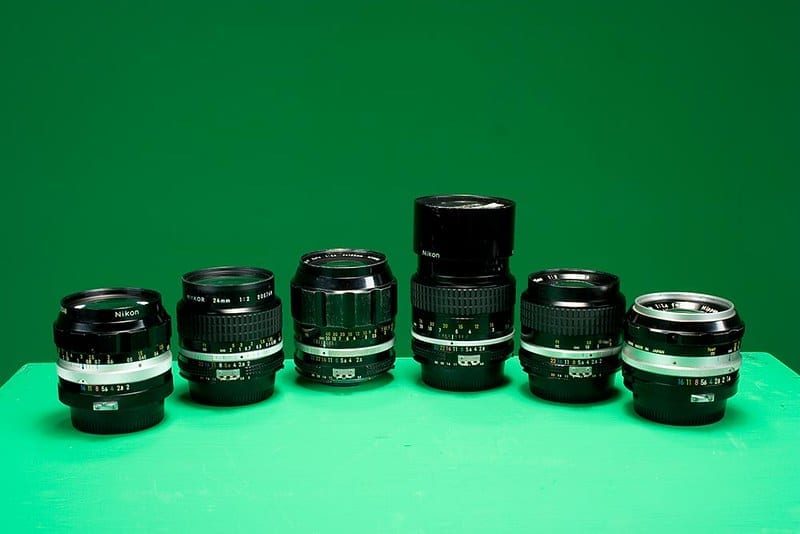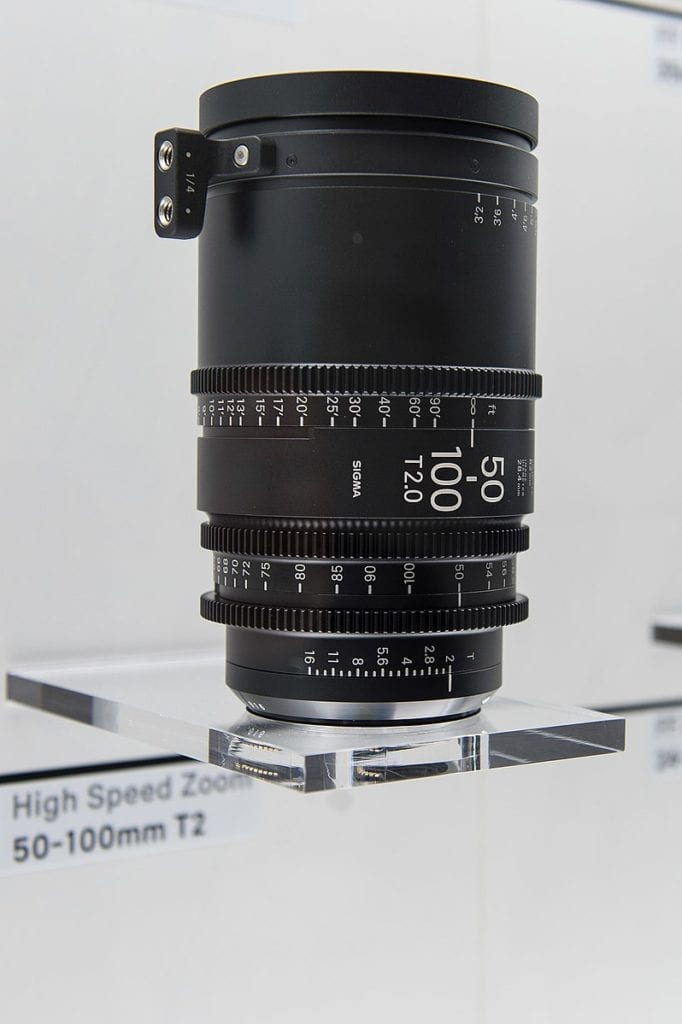What Does Cinematic Really Mean In Relation To Spherical Lenses?
In this guide we are focusing on lenses*. Here we’ll explore how lens selection can enable creative choices to be made in the filmmaking process.This article explores lenses along and their influence on what makes film/ video cinematic. Consider how lens selection for your next film or video project could benefit from sometimes thinking outside of the lens box.
But first, here is a primer about commonly used spherical lens types for filmmaking…
*Pun intended
Prime Lenses
Spherical lenses for filmmaking can be divided into two basic categories, prime lenses and zoom lenses. They range from expensive Cinema prime lenses to relatively inexpensive photographic stills lenses – the latter can often natively mount to cinema cameras, or sometimes be adapted to do so. Spherical lenses have been around well before the birth of cinema itself, so the choice of spherical lenses for modern filmmaking is truly vast.
Prime lenses are fixed focal length lenses, meaning that they do not zoom. Prime lenses used for cinema camera use offer the highest quality and fastest speed when compared to zoom lenses. Prime lenses that are built specifically for cinematography utilize manual operation of focus and iris control.

Zoom Lenses
Zoom lenses offer variable focal length selection, through mechanical distancing of internal optical elements. often at the expense of aperture speed and added physical weight due to more glass elements inside. Cine zoom lenses that are built specifically for cinematography are generally made to be parfocal – meaning that once focus is set, the subject in focus remains as such throughout the zoom range (often a rare feature to find in comparable quality still lens zooms). One main advantage of zoom lenses for filmmakers is being able to adjust focal length on the fly, allowing one lens to cover a range normally achieved only by using multiple prime lenses.

High end Cine Prime and zoom lenses are made specifically for use by a crew, typically on a set or location. They are built to deliver the best possible resolution and refinement to image capture as well as withstand the rigors of filmmaking. Modern cinema lenses are somewhat standardised mechanical operation so as to allow a crew to work with them. Most high-end Cine lenses that are used with modern cameras conform to Arri PL or PV (Panavision) lens mount standard. Older cinema lenses are often rehoused and adapted to conform to one of these standards.
One of the highest regarded makers of cinema lenses is Cooke Optics, they are an academy award winning company with over 100 years of making lenses. To many people the ‘Cooke Look’ has been a major contributor in helping to create many ‘Cinematic’ moments. Check out their showreel here:
Unless you have very deep pockets these high end cinema lenses would be for rental only, which leads us to…
‘Affordable’ Spherical Lenses
Nowadays there are a wealth of relatively affordable lenses to choose from. Some vintage lenses that you can find on Ebay right now, can give the most expensive modern cine lenses a run for their money…you just need to know what to look for (but more on that later!).
Right about in the mid-range in terms of price point are quite a few modern offerings for cinematographers. Most are of good mechanical build and tailored for modern 4k+ resolution digital cinema cameras. Lenses from brands such as Tokina, Zeiss, Fujinon and canon offer a wide selection of lenses that can not only be available in industry standard PL mount, but also for a wealth of other modern camera mount standards such as Sony’s e-mount, Canon’s EF and M4/3 etc. The advantage of these modern lenses are that they allow a wider range of cameras to be used with them, allowing filmmakers more possibilities of choice, especially if working to a lower budget.
At around the lower end of the price spectrum, we get to photographic stills lenses. Many high end digital cinema cameras these days allow the possibility for using a wider range of lens types, either by allowing their mounts to be swapped over…or by having a non native PL mount to start with. Put simply, modern camera manufacturers realised that the amount of still lenses being used by filmmakers was sufficiently high to allow easier adaptation to their cameras.
These modern stills lenses in the lower-mid price range can deliver clean and sharp results due to their high quality corrective design and modern multi-coating of the optical elements. These coatings were intended for photographers who demand good contrast and heavy flare suppression to their lenses. This can sometimes be a little too much and give an undesired look for cinematographers though, since these qualities can lend a ‘baked-in’ harshness to skin tone and crushed shadows. But the positives in terms of overall quality vs cost of these lenses cannot be denied, especially for lower budget projects.
OK, but can they deliver ‘Cinematic’ images?
Yes.
A few movies have been shot using modern stills lenses to good effect. A very notable example is Jeremy Saulnier’s excellent film, Blue Ruin.
The movie was shot with a Canon C300 with Canon L-Series lenses.
Vintage Lenses
Sometimes a director may want a more vintage look or feel to an image and choose an older lens that has some inherent softness to it or have a smoother falloff of highlights to the image. Some would consider that the resulting images might be more ‘Cinematic’ because older lenses tend to deliver a more flattering/ smoother result from skin tones even without added filters, and these lenses can exhibit some of the subtle optical qualities from the good old celluloid days. A vintage lens can give character and warmth to an image, a quality that sometimes only becomes apparent when comparing with more modern glass. Vintage lenses generally appear lower contrast because of more simpler single coatings applied to their optics. Older lenses tend to be more susceptible to flare and bloom when exposed to strong light sources which is often considered an aesthetic charm, rather than a technical fault. It is these ‘imperfections’ that can be described by some as giving an image an ‘Organic’ feel.
Many vintage cinema lenses of yesteryear are still in use today. Their optical performances are often exceptionally high when properly serviced and collimated. Pictured above are 50 year old vintage Cooke speed Panchro lenses, rehoused to modern mechanical cine lens standards by TLS london.
Check out video examples here:
The Kubrick Connection
Stanley Kubrik was a total lens geek.
His knowledge of camera lenses was impressive to even the most experienced of lens technicians. Throughout his career he continued to tinker, adapt and wrestle with optical physics to get the images from inside of his head, to hit the beads of the silver screen. As a director, he pushed many boundaries in terms of creating memorable ‘Cinematic’ moments, often through visual flair from innovative lens choice, camera movement and perspective.
He was a champion in adapting and modifying pre-existing cine and photographic stills lenses to achieve unique results. There are many online video essays and articles that dissect the imagery of Kubrick’s films, but to get to the technical core of what helped him capture so many memorable cinematic moments, you can’t get much better than this:
Joe Dunton talks about Kubrick’s lenses:
Shelley Duvall talks about Stanley Kubrick’s 18mm lens used for ‘The Shining’. Interview from 1983:
https://www.youtube.com/watch?v=hFPmTV_UqKA
The best budget ‘Cinematic’ Spherical lens set?
This is not an easy one to answer, since the term ‘best’ is just as subjective a term as ‘cinematic’. But if you are looking to invest your own money in a relatively inexpensive set of lenses that can deliver fantastic results, and staying with Kubrickian theme – you could do a lot worse than investing in Zeiss contax glass. These are vintage full frame compatible stills lenses that share most of the optical DNA with their cinema prime counterparts. They have a great balance of good optical sharpness yet a subtle vintage feel.
Here is a great video by Media Division that outlines the Zeiss lenses:
Probably one of the more underrated creative choices one can make for a film project is lens selection. Everything put in front of the camera’s sensor or film plane should be considered as an opportunity to add to the story and lenses are no exception. Whenever possible, try out a range of lenses and shoot tests and see what can be learnt from them. Through experimentation and creative thought, lens selection can truly add value to your next project.